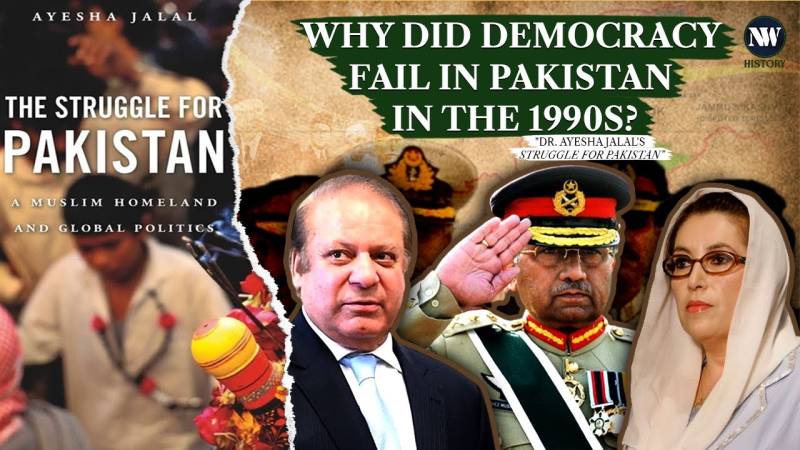Pakistan’s political landscape in the 1990s was characterized by chronic instability, as Benazir Bhutto and Nawaz Sharif alternated in short tenures as prime ministers. Bhutto faced challenges from the military and bureaucracy, leading to her government's dismissal due to corruption charges.
Ayesha Jalal in her book 'The Struggle for Pakistan' states, “Eager to form a government in Punjab, Benazir deputed her trusted aide Farooq Leghari to stop Nawaz Sharif from becoming chief minister. Sharif won by a comfortable margin with independents on sale to the highest bidder. PPP’s uncertain majority in the national assembly was counterbalanced by the opposition’s control of the senate.”
The reason why Benazir Bhutto’s government lasted only two years was because the relations between the deep state and her government soured quickly.
Sharif's government also faced instability, including clashes with the president and judiciary. His administration was marked by attempts to consolidate power through constitutional amendments and the declaration of Pakistan’s nuclear capability, which brought forth international sanctions and exacerbated economic problems.
“The 1990 elections brought Nawaz Sharif’s IJI, backed by Pakistan’s powerful deep state, to power but he too did not last falling out with the president in 1993. Nawaz Sharif was also dismissed under 58(2b) but in May 1993 a historic judgment restored his government. The 1993 elections brought back Benazir Bhutto as the Prime Minister but her former aide dismissed her government and now president Farooq Leghari under 58(2b) again. This was not before, Benazir Bhutto found herself embroiled in a battle with the country’s judiciary over judicial appointments she had made out of turn,” Dr Jalal writes.
The decade was defined by a missed opportunity for peace and cooperation between Pakistan and India, as progress was disrupted by the Kargil conflict, a result of persistent interference in political matters from Pakistan’s most powerful non-elected institution.

